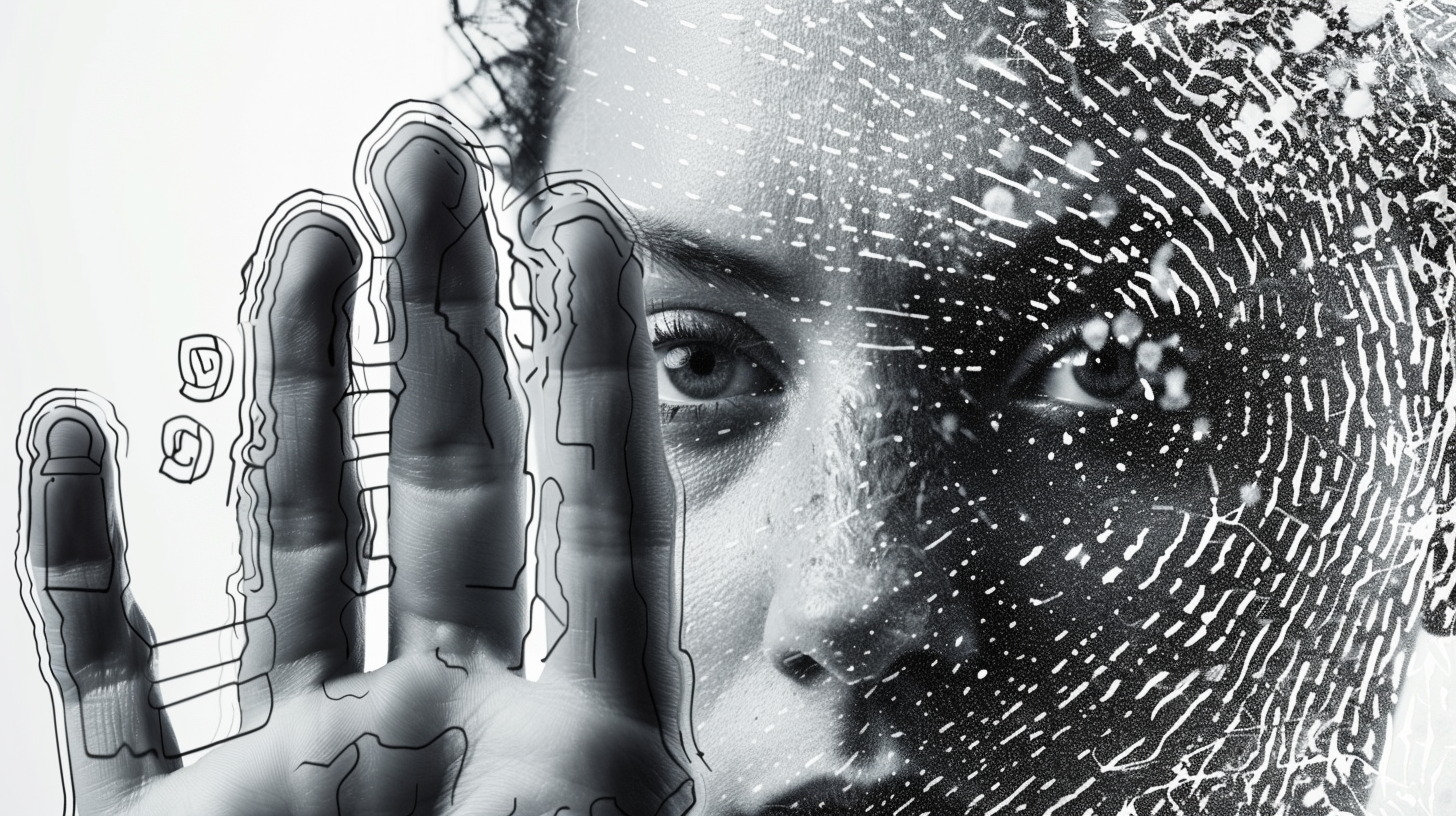Table of Contents Show
As we stand on the brink of a digital revolution, passwords are becoming the keys of yesterday, making way for biometric security to release the future. We’re witnessing an unprecedented shift towards using unique physical and behavioral traits for authentication, raising both opportunities and challenges. From fingerprints to facial recognition, the landscape of digital security is being reshaped. However, this release isn’t without its pitfalls. Concerns about privacy, data breaches, and the ethical implications of biometric data collection are surfacing. As we navigate this new terrain, let’s explore the implications of biometric security and ponder whether the era of passwords is truly coming to an end.
Key Takeaways
- Biometric security offers enhanced personal identification through traits like fingerprints and facial recognition.
- Privacy concerns and data breach risks necessitate strong encryption and multi-factor authentication.
- Legal frameworks like GDPR mandate secure biometric data storage and user consent.
- The future of biometrics may reduce reliance on passwords, increasing convenience and security.
The Shift to Biometrics
As society gravitates towards more secure and personalized forms of identification, we’re witnessing a significant shift towards biometric security. This movement isn’t just about ditching the cumbersome process of remembering dozens of passwords; it’s about embracing a future where our very identities can protect what’s dear to us. We’re stepping into a domain where the keys to our digital lives lie within us—our fingerprints, our faces, our voices. It’s a transformation that promises not just enhanced security, but also a newfound sense of freedom.
We’re tired of the constant breaches and the endless cycle of changing passwords. It’s clear that traditional security measures are no longer cutting it. That’s why we’re moving towards something that’s inherently unique to each of us: our biometrics. This isn’t just about convenience; it’s about constructing a world where we can navigate our digital and physical spaces with ease, without the fear of intrusion.
Understanding Biometric Technology
As we move forward, it’s essential we grasp the fundamentals of biometric technology and the various types of biometric identifiers. This knowledge is critical for understanding how our unique physical and behavioral traits can enhance security measures. Let’s explore these concepts to better appreciate their impact and implementation in our digital world.
Biometric Technology Basics
To grasp the concept of biometric security, we must first understand the basics of biometric technology, which identifies individuals based on physical or behavioral characteristics. This technology offers a path to freedom from traditional, cumbersome security measures like passwords and PINs, which can be forgotten or stolen. Let’s break down its core principles:
- Uniqueness: Every individual possesses unique traits, making biometric identifiers highly reliable.
- Permanence: These characteristics remain stable over time, ensuring long-term validity.
- Collectability: Biometric data can be easily collected and measured, streamlining the identification process.
Types of Biometric Identifiers
Having explored the core principles of biometric technology, let’s now examine the various types of biometric identifiers that make this technology so versatile and powerful. First off, we’ve got fingerprints, unique to every individual, offering a straightforward way to confirm someone’s identity. Then there’s facial recognition, which has gained traction for its ease of use, especially in smartphones and security systems. Don’t forget about iris scans; they’re incredibly secure, thanks to the complex patterns in our eyes. Voice recognition also holds a spot, ideal for hands-free operations and accessibility. To conclude, we’re seeing advancements in vein pattern recognition, a less common but highly secure method. Each of these identifiers empowers us with the freedom to access our digital lives more safely and conveniently than ever before.
Types of Biometric Identifiers
Biometric identifiers encompass a range of personal traits, both physical and behavioral, that technology uses to verify identity. We’re witnessing a revolution where the chains of traditional security measures like passwords and PINs are being shattered, making way for a future where our very being grants us access to our digital lives.
Here’s a glimpse into the types of biometric identifiers that are leading this charge:
-
Fingerprint Recognition: Perhaps the most widely recognized form of biometric verification, fingerprint recognition analyzes the ridges and valleys on an individual’s fingertip. It’s quick, easy, and highly secure, making it a go-to for accessing smartphones and secure doors alike.
-
Facial Recognition: Beyond just a way to tag friends in photos, facial recognition technology maps out the unique contours and features of an individual’s face. This method is gaining traction not just in personal devices but in public safety and border control, offering a seamless blend of security and convenience.
-
Voice Recognition: Our voices carry unique signatures, and voice recognition technology captures these to lock down access to sensitive information or devices. It’s not just about the sound but the pattern and rhythm of speech, adding an extra layer of security that’s incredibly difficult to mimic.
We’re stepping into an era where freedom means breaking free from the confines of traditional security measures. Biometric identifiers don’t just offer a new way to secure our digital lives; they promise a future where we’re no longer bogged down by the need to remember complex passwords or carry keys. Our identity becomes our access, and that’s a powerful step toward technological liberation.
Advantages of Biometric Security
Often, we overlook the convenience and enhanced security that biometric technology brings into our daily lives. We’re moving towards a future where carrying multiple keys or remembering a plethora of passwords could become obsolete. Biometrics offers us freedom from these burdens, streamlining access to our devices, homes, and even secure locations with just a simple scan of a fingerprint, a facial recognition, or an iris scan.
One of the biggest advantages we find in biometric security is its uniqueness. Each individual’s biometric data is distinct, which drastically reduces the risk of unauthorized access. We’re talking about a security measure that’s incredibly difficult to replicate or steal, compared to traditional passwords or keycards that can easily be lost, shared, or hacked.
Additionally, we appreciate the efficiency biometrics introduce. Imagine walking through airport security or logging into our online accounts without having to fumble for our ID or remember complex passwords. It’s not just about saving time; it’s about enhancing the flow of our daily activities, making security checks almost seamless.
Furthermore, biometric systems often come with real-time updates, offering us continuous protection. They can quickly adapt to slight changes in our biometric data, ensuring that we’re always recognized while keeping impostors out. This dynamic nature also means that any attempt at unauthorized access is immediately flagged, providing us with instant alerts and peace of mind.
Privacy Concerns Raised
As we explore biometric security further, we can’t ignore the privacy concerns it raises. The potential for increased surveillance, the vulnerability to data breaches, and issues around consent and control are critical points we’ll examine. These concerns highlight the need for a careful balance between security and personal privacy.
Potential Surveillance Risks
Several concerns arise when considering the potential surveillance risks associated with biometric security, particularly regarding privacy. We’re wary of how our personal identifiers could be monitored or tracked without our consent. Here’s why:
- Essential: Our biometric data could lead to constant surveillance, making us feel like we’re always being watched.
- Critical: With biometrics, it’s easier for entities to track our movements, infringing on our freedom to move anonymously.
- Vital: By analyzing our biometric data, companies or governments could profile our behaviors and preferences, potentially manipulating our choices.
We cherish our privacy and freedom, and it’s essential that we remain vigilant about how biometric security could be used to compromise these values.
Data Breach Vulnerabilities
We must also confront the unsettling reality that biometric data, once considered secure, is increasingly vulnerable to breaches, posing significant privacy concerns. Our fingerprints, faces, and voices, unique identifiers that we can’t simply change at will, are at risk. This threat to our personal freedom is not just theoretical; it’s a growing concern that demands our attention.
| Risk Factor | Impact on Privacy | Mitigation Strategies |
|---|---|---|
| Hacking Incidents | High | Enhanced Encryption |
| Unauthorized Access | Severe | Strict Access Controls |
| Data Misuse | Significant | Transparent Data Policies |
| Permanent Compromise | Irreversible | Multi-Factor Authentication |
We’re standing at a crossroads, where the pursuit of security must not trample our right to privacy. It’s essential we navigate this path with caution, ensuring our freedom remains intact in the age of biometric security.
Consent and Control Issues
Moving beyond the vulnerabilities of biometric data, it’s equally important to address the pressing issues of consent and control that raise serious privacy concerns. We’re diving into the heart of what makes us uneasy about handing over our biometric keys to the digital kingdom.
- Consent: Often, we’re not fully informed about how our data will be used, stored, or shared. It’s a freedom we can’t afford to lose.
- Control: Once our biometric data is out there, we’ve got no take-backs. This loss of control is a direct hit to our autonomy.
- Oversight: Without proper oversight, there’s nothing stopping misuse. We demand systems that respect our freedom, not ones that box us in.
It’s about securing our digital freedom as much as our physical selves.
Ethical Considerations
Delving into the ethical considerations, it’s important to acknowledge how biometric security impacts individual privacy rights. We’re entering a world where our physical and behavioral characteristics can open doors, both literally and metaphorically, but at what cost to our freedom? Biometric data is inherently personal, and its use raises significant concerns about consent, data protection, and the potential for misuse.
We can’t help but question who really controls this data and for how long. Once our biometric information is out there, we lose a degree of control over our most personal identifiers. The possibility of this data being hacked, misused, or mishandled is not just a hypothetical concern; it’s a pressing issue that we must address to safeguard our freedoms.
In addition, there’s the issue of surveillance. The widespread use of biometric security could lead to a society where our movements, actions, and even our emotions are constantly monitored and analyzed. This Big Brother scenario isn’t just about privacy; it’s about maintaining our autonomy and freedom in a digital age.
We must also consider the ethical implications of excluding individuals from services if they choose not to or cannot provide biometric data. Such practices could lead to a new form of digital divide, where access to services and freedoms are contingent on one’s willingness or ability to surrender their biometric data.
Accuracy and Reliability Issues
Despite advancements in biometric technology, its accuracy and reliability remain important concerns that can impact user security and trust. We’re all in for embracing technology that promises us freedom from the tyranny of passwords, but not at the cost of our security being compromised due to flaws in the system.
Here are the three primary issues that we can’t overlook:
-
False Rejections and Acceptances: No system is perfect, and biometric scanners are no exception. A high false rejection rate can lock out legitimate users, causing frustration and potentially denying access to critical services. On the flip side, a high false acceptance rate could let unauthorized individuals slip through, posing a significant security risk. We demand systems that respect our need for both accessibility and security.
-
Environmental Factors: The reliability of biometric technology can be affected by the environment. Dirty fingers, low lighting, or even changes in voice due to illness can prevent biometric systems from accurately recognizing us. We need technology that adapts to our changing world, not one that demands we fit a narrow set of conditions to access our own data and services.
-
Adaptive Criminal Techniques: As biometric security becomes more common, so too do the techniques used by criminals to bypass these measures. From high-resolution photographs to sophisticated voice recordings, attackers are continually finding new ways to mimic biometric data. We’re in a race against those who wish to exploit our data, and it’s important that our security measures are always one step ahead.
In our quest for freedom and ease of access, we mustn’t sacrifice the very security we seek to enhance. The road to reliable biometric security is fraught with challenges, but it’s a journey we must undertake with both caution and determination.
Biometric Data: Storage and Safety
Having addressed the challenges of accuracy and reliability, we now turn our focus to the equally significant issue of how biometric data is stored and safeguarded. As we dive deeper into the era of biometric security, it’s critical we guarantee our personal identifiers are kept safe. We’re not just talking about fingerprints and facial recognition patterns; we’re dealing with the very keys to our digital kingdoms.
To start, it’s vital to understand that when we talk about storing biometric data, we’re advocating for encryption at the highest level. This isn’t just about keeping our data safe from hackers; it’s about ensuring that even if they get their hands on the data, it’s useless to them. Our freedom lies in the assurance that our biometric data, once encrypted, remains impenetrable.
Furthermore, we’re pushing for a model where biometric data is stored locally whenever possible. Why? Because the less our data travels, the less it’s exposed to potential threats. By keeping our biometric information on our devices, rather than on some remote server, we’re reclaiming control. It’s our data, our rules.
Lastly, we must discuss the need for transparency and consent. We should always have a say in how our data is used and stored. This isn’t just about privacy; it’s about autonomy. Consent should be informed, explicit, and revocable at any time. Our freedom depends on it.
Legal Frameworks and Regulations
As we explore the domain of biometric security, it’s essential we also navigate the complex legal frameworks and regulations that govern its use and protection. It’s a terrain that’s as intricate as it is vital for our freedom and privacy.
The legal landscape is varied across the globe, but there are a few key elements that we should all be aware of:
-
Consent and Transparency: Laws demand that organizations obtain explicit consent from individuals before collecting, processing, or storing their biometric data. This means you’ve got to be informed about what’s being collected and how it’ll be used — a fundamental step towards empowering us with control over our personal information.
-
Data Protection and Privacy: Regulations such as the GDPR in the European Union and CCPA in California set high standards for data protection, including biometric data. These laws mandate that collected data must be securely stored and only used for the purposes specified at the time of collection. It’s about ensuring our data isn’t misused or falls into the wrong hands.
-
Breach Notification: In the event of a data breach, these legal frameworks require that we’re promptly informed. This transparency allows us to take immediate action to protect ourselves, reinforcing the principle that our security is paramount.
Understanding these regulations is vital as we navigate the shift towards biometric security. They’re designed to protect us, ensuring our biometric data is handled with the care and respect it deserves. As we embrace this new era of security, let’s remain vigilant, ensuring our rights are safeguarded every step of the way.
Impact on Digital Security
We’re now turning our focus to how biometric security reshapes the landscape of digital security. It’s clear that these technologies bring about enhanced security measures, directly addressing many privacy concerns. However, they also present new challenges for hackers, forcing them to adapt their strategies.
Enhanced Security Measures
Enhanced security measures, such as biometric authentication, greatly bolster digital security by adding a personalized layer of protection against unauthorized access. We’re stepping into a future where our unique attributes, like fingerprints and facial recognition, become the key to our digital lives, making it harder for intruders to gain access. This shift brings several benefits:
- Increased Accuracy: Biometric systems reduce the risk of mistaken identity, ensuring only we can access our accounts.
- Speed and Convenience: We’re spared the hassle of remembering complex passwords or carrying physical keys.
- Adaptive Security: These systems can adjust their sensitivity based on context, offering tighter security when needed.
Privacy Concerns Addressed
While biometric security offers numerous advantages for digital protection, it also raises significant privacy concerns that we need to address. We’re aware that integrating our biometric data into security protocols means our most personal identifiers are on the line. It’s essential we confirm these systems uphold the highest standards of data protection and user consent. We advocate for transparent policies that clarify how, when, and who can access our biometric information. Safeguards against unauthorized data sharing are non-negotiable. We’re pushing for robust encryption methods and legal frameworks that protect our biometric data from misuse. Our freedom and privacy in the digital age depend on it. It’s about striking the right balance between security and personal liberty.
Hackers’ New Challenges
As biometric security becomes more prevalent, hackers face novel obstacles in their attempts to breach digital defenses. We’re entering a phase where traditional hacking methods meet their match, pushing cybercriminals to rethink their strategies. The challenges they now face include:
- Complexity in Duplication: Biometric data, such as fingerprints or iris patterns, is much harder to replicate than a simple password.
- Dynamic Security Measures: Biometric systems often update or change the way they analyze data, making it tougher for hackers to use static methods.
- Legal and Ethical Boundaries: Attacking biometric systems can carry heavier legal consequences, adding another layer of risk for those on the wrong side of the law.
We’re witnessing a shift in digital security that not only strengthens our defenses but also reshapes the battlefield for freedom in the digital age.
Future of Passwords in Biometrics Era
In the era of biometrics, we’re facing a pivotal shift away from traditional passwords towards more secure and personalized forms of authentication. This transformation is not just about embracing new technology; it’s about freeing ourselves from the challenges of forgotten passwords, the hassle of resets, and the constant threat of security breaches. We’re moving towards a future where our very identities—our fingerprints, our faces, our voices—access the digital world in a way that’s both simpler and more secure.
We’re not looking at the end of passwords overnight, but we’re certainly on a path that could make them obsolete. As we integrate biometric authentication more deeply into our daily lives, the reliance on traditional passwords decreases. This isn’t just about convenience; it’s about constructing a digital identity that’s inherently more difficult to replicate or steal. Our biometric data offers a unique key that’s far more complex than alphanumeric passwords.
However, this shift isn’t without its challenges. We’re overcoming privacy concerns, the need for robust data protection, and ensuring universal access. But we’re optimistic. With the right safeguards in place, biometric authentication can offer a level of freedom and security that passwords simply can’t match.
As we look to the future, we’re excited about the possibilities. A world where accessing our digital lives is as simple as looking at a screen or touching a sensor offers a level of liberation we’ve long sought in the digital age. The future of passwords in the biometrics era isn’t just about improving security; it’s about enhancing our digital freedom.
Case Studies: Biometric Implementation
Let’s explore real-world examples where biometric technology has been successfully implemented, showcasing its transformative impact on security and user experience. We’re diving into a world where freedom from the traditional, cumbersome methods of authentication is not just a dream but a reality. Here are three compelling case studies:
-
Airports and Biometric Boarding: Many airports around the globe have started to adopt biometric systems for boarding processes. This move not only streamlines the boarding process but also enhances security by ensuring that the person boarding the flight is the exact match to their passport photo. It’s a win-win, offering travelers a seamless experience while keeping safety in check.
-
Financial Institutions and Fingerprint Authentication: Banks and financial services have embraced fingerprint authentication for mobile banking apps, allowing users to access their accounts with just a touch. This method not only offers convenience but also adds a layer of security, as fingerprints are unique and harder to replicate than traditional passwords.
-
Smartphone Security: Perhaps the most widespread use of biometrics can be seen in smartphones. From fingerprint scanners to facial recognition, these features have become standard, offering users a quick and secure way to access their devices. This shift towards biometrics has set a new standard for personal device security and user experience.
Through these examples, we see how biometric technology is paving the way for a future where security and convenience go hand in hand. It’s not just about freedom from passwords; it’s about embracing a more secure, efficient way to protect our digital lives.
The Road Ahead: What’s Next?
We’re now at the cusp of exploring what the future holds for biometric technology and its potential to further revolutionize security and user convenience. As we move forward, it’s clear that our journey towards a more secure yet unobtrusive digital world is far from over. We’re not just dreaming; we’re planning and executing steps to make sure that the freedom of seamless access and ironclad security becomes a reality for everyone.
The road ahead is paved with advancements that promise to make biometric technology even more integrated into our daily lives. We’re talking about innovations that could see biometrics securing not just our devices and accounts, but our homes, vehicles, and even the ways we pay for goods and services. Imagine walking into a store, picking up what you need, and simply walking out, with payment processed securely and automatically through facial recognition or a quick fingerprint scan. That’s the kind of freedom and convenience we’re working towards.
Furthermore, we’re keenly aware of the concerns surrounding privacy and data security. That’s why we’re committed to developing solutions that not only enhance security but also protect individual privacy. We’re working on encryption methods that make sure your biometric data never leaves your device or, if it must, is protected by the most robust security measures available.
Conclusion
By the way, we’re standing on the brink of an absolute revolution, folks. The era of typing passwords, those forgettable strings of chaos, is gasping its last breath. With biometrics, we’re not just accessing our devices; we’re accessing a futuristic domain where our very essence becomes the key. It’s like stepping into a sci-fi utopia, minus the robots taking over the world (we hope). As we dive headfirst into this brave new world, let’s embrace the change and wave goodbye to the ancient relics of passwords. The future is now, and it’s incredibly exciting!








